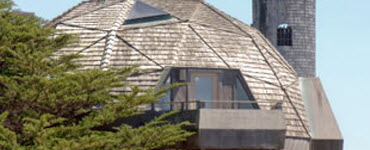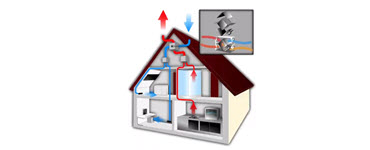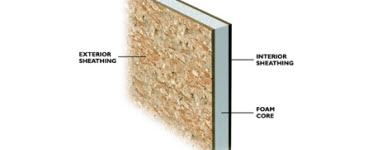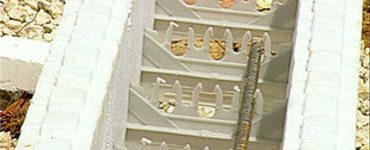Trombe wall
A Trombe (TROM-bee) wall is a passive solar device consisting of a thick sun-facing masonry wall (thermal mass) to absorb the sun's energy, combined with an air space and insulated glass. It was developed in the 1950s by Felix Trombe.
While the sun is shining, optical energy travels through and is trapped beneath the glass and absorbed by the masonry wall. The energy stored in the wall is then released slowly to the interior of the building when the sun is no longer shining. Using the sun's stored energy to heat your home reduces your conventional energy consumption.
During the summertime when heating energy isn't needed, the sun is higher in the sky and usually a Trombe wall has an overhang on it. The sun hits that overhang and bounces back rather than being collected and dispersed by the masonry wall.
In this video: A homeowner with a trombe wall discusses how it works and helps improve the comfort of her home.
More from this category
Geodesic domes
A geodesic design uses interconnected triangles to create a strong, environmentally friendly structure.
New home comfort issues
Habitat for Humanity
Habitat for Humanity is an organization that provides simple, sturdy homes. Learn how energy efficiency is a key factor in building these homes.
Historic preservation
A preservation expert shares how to restore an older home economically and energy efficiently.
Structural insulated panels
Structural insulated panels, also called SIPs, foam-core panels or stress-skin panels, are significantly more airtight than stud walls.
Insulated concrete forms
An insulated concrete form (ICF) system eliminates the cold drafts typical of wood-frame construction.
Framing options
You have energy efficient and sustainable options when it comes to framing your new home.
Decoding building requirements
Learn about some of the changes for new homes built today. An expert highlights some of the things to consider when building a new home.









